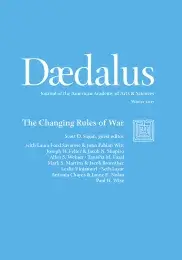Strategy & Entailments: The Enduring Roles of Law in the U.S. Armed Forces
This essay aims to redescribe key moments in the history of American military engagements to account for a persistent role that law has played in these conflicts. The law of war tradition has persisted since the War of Independence, we argue, because of an internal dynamic that makes it both strategically useful and costly for the United States to commit itself to rule-bound warfare. Invoking the laws of war to advance the strategic interests of the United States, American soldiers and statesmen have found, entails consequences beyond their control, making reversals in position more costly and enabling critiques in the language of the law. These entailments, we argue, are built into the enduring strategic value of the laws of war. The law has remained useful not because it can claim perfect neutrality, but because it has force independent of the interests for which it is mobilized.
Law has had a central place in the American military since the War of Independence. But law’s persistence has been shadowed by an equally durable critique. Time and again, from the eighteenth century to the present, critics have charged that American soldiers and statesmen invoke the law not as a neutral adjudicator among the contending sides, but as a tactic–a weapon, even–in the advancement of U.S. interests. And Americans have admitted as much. From George Washington’s strategic adoption of the legal standards that attached to independent states to the use of law as a nonlethal weapons system in today’s counterinsurgency efforts to win hearts and minds, Americans have been remarkably candid about the strategic uses of law.
The difficulty with strategic deployment of the law to advance one’s interests, of course, is that it threatens to undo the law’s value. When critics today talk about “lawfare,” for example, they suggest implicitly that the claims being made in the name of the law lack the neutral status on which the law’s legitimacy relies. . . .
To read the full essay, access the PDF.
